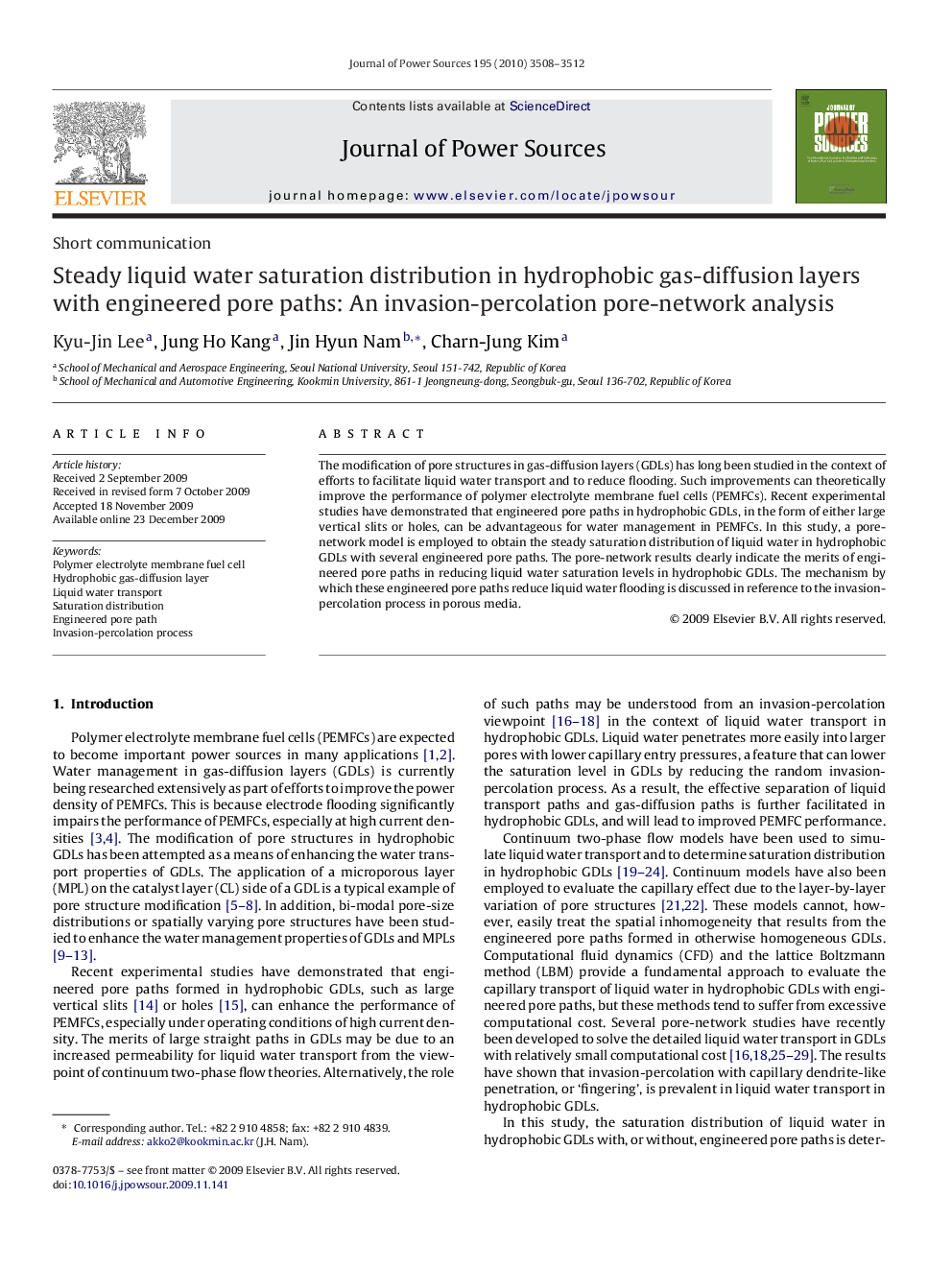| Article ID | Journal | Published Year | Pages | File Type |
|---|---|---|---|---|
| 1289524 | Journal of Power Sources | 2010 | 5 Pages |
The modification of pore structures in gas-diffusion layers (GDLs) has long been studied in the context of efforts to facilitate liquid water transport and to reduce flooding. Such improvements can theoretically improve the performance of polymer electrolyte membrane fuel cells (PEMFCs). Recent experimental studies have demonstrated that engineered pore paths in hydrophobic GDLs, in the form of either large vertical slits or holes, can be advantageous for water management in PEMFCs. In this study, a pore-network model is employed to obtain the steady saturation distribution of liquid water in hydrophobic GDLs with several engineered pore paths. The pore-network results clearly indicate the merits of engineered pore paths in reducing liquid water saturation levels in hydrophobic GDLs. The mechanism by which these engineered pore paths reduce liquid water flooding is discussed in reference to the invasion-percolation process in porous media.
